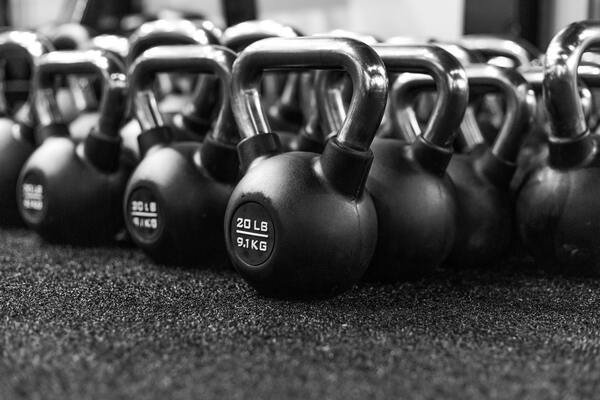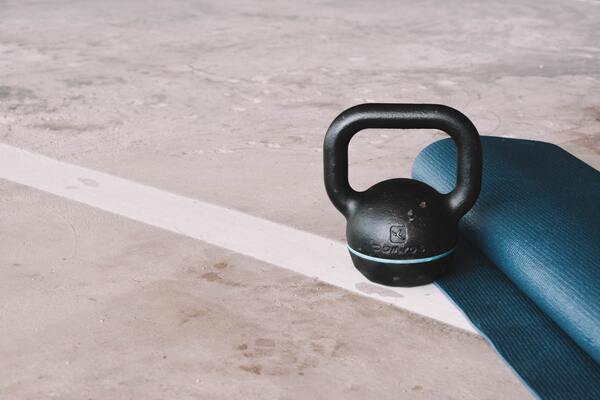Workouts for the chest or abs are always popular. These are the muscles you can see in the mirror after all. It’s debatable whether your back muscles are more significant than those on your front. To strengthen your back, whether you exercise at home or in the gym, you can include kettlebell lat exercises in your regular routine.
Picking The Right Kettlebell
Similar principles should be used to determine the weight of any exercise.
- A weight that you can swing with proper form should be your choice.
- Make sure the weight you select is adequate for effectively training the desired muscles.
The ideal weight for beginners is one that allows for 12–15 repetitions without losing form.
Intermediate lifters can raise the weight until completing 12 reps becomes difficult.
Lifters with advanced skills should select a weight that can only be used for 10 reps.
Whether you are an experienced or novice KB lifter, maintaining proper form is essential for both muscle targeting and injury prevention.
Best Kettlebell Back Exercises
Kettlebell Renegade Row
Renegade rows are not only a fantastic back exercise but also a fantastic full-body one! Your legs and core are also involved in this exercise, which targets your lats, mid-traps, rhomboids, and posterior deltoids. Push-ups and renegade rows make for a really time-effective workout.

Elevated Plank Bent-Over Row
Renegade rows are definitely a great workout, but they’re not for everyone. In order to support your weight on one arm, you’ll first need two kettlebells and exceptional wrist strength. Because you only need one weight, this kettlebell back exercise is a little simpler. It remains a very powerful movement, though.
- Place your other hand, which is holding a kettlebell, on a step or bench that is between the knee and hip height. Walk your feet back into a plank position while maintaining a straight supporting arm. You should pull your shoulders back and down, brace your abs, and let the weight fall from them.
- Straighten your arm and row the kettlebell up and into your ribs without lifting or lowering your hips or turning your body.
- Repeat by extending your arm.
- Consider performing the same number of reps on both sides.
Unsupported Single-Arm Bent-Over Row
The majority of people rest their free hand on a nearby exercise bench while performing single-arm rows. While this might increase your ability to lift weights, it also removes your erector spinae from the exercise. By performing this exercise without any assistance, you will work your entire back.
- Stand with your feet about shoulder-width apart, a kettlebell in one hand. For balance, slightly stoop your knees. Pull your shoulders back and down, and tense your abdominal muscles.
- From your hips, pivot forward until your upper body is at a 45-degree angle. From your shoulders, let your arms hang down. Keep your lower back from arching.
- Bend your arm and row the weight up and into your ribs without rotating your hips or shoulders.
- Put out your arm again.
- Perform the exact same number of reps on both sides.
Kettlebell Wrestler’s Row
In situations where all you have are small, light kettlebells, this exercise is very helpful. Even light weights feel much more difficult because your muscles are kept under tension for a longer period of time.
This exercise targets your lats, mid-traps, rhomboids, and posterior deltoids, just like all rowing exercises do. Your erector spinae is used because it’s performed without assistance.
- Stand with your feet about shoulder-width apart while holding a kettlebell in each hand. Kneel down, engage your core, and pull your shoulders back and down.
- Up until your body is angled at roughly a 45-degree angle, lean forward from your hips. Your lower back shouldn’t be rounded. Bring both weights up to your ribs. This is where you are starting from.
- Row the weight down to your side while maintaining a stationary arm.
- Repeat on the other side.
- For the duration of your set, keep alternating arms.
Single-Arm Deadlift
One of the best back-building exercises available is the deadlift. They’re also great for boosting all-around body strength. You can also perform deadlifts with a kettlebell instead of the usual barbell. You’ll have to exert extra effort to keep your spine stable when using a single weight, which will result in more activation of your lower back and core.
- the floor with your kettlebell. With your feet about shoulder-width apart, mount it. Squat and grasp the handle with your overhand. Brace your hips, lift your chest, straighten your arm, and arch your lower back just a little.
- Put some weight on your lats to keep the weight close to your legs as you stand up by pressing your feet into the ground.
- Reverse the motion by lowering the kettlebell to the ground.
Kettlebell Swing
The two-handed swing is by far one of the most well-liked kettlebell variations, and it’s useful for functional training that relates to sports and athletic movements because it’s dynamic. However, it’ll also work your entire posterior chain in addition to your core, and it’s great for general conditioning.
Make sure your hips (Hip Hinging) are used during the kettlebell swing exercise so that your lower back is not involved. This will protect you, and it’s much more efficient to do it this way.
Additionally, the upward movement will force thoracic extension, which is crucial for good posture, better breathing, and athletic performance.
- Place the kettlebell on the ground and stand in front of it with your back straight, knees bent, and chest raised.
- Swing the kettlebell until your wrists are positioned between the inside of your thighs while holding it with both hands.
- Push the kettlebell up with your hips as a hinge, and the lower posterior chain and heels of your body will take the brunt of the impact.
Kb Clean
This more complex exercise engages the back and leg muscles.
- Kettlebell in front of you, on the ground, while standing straight.
- Utilizing your hips to propel yourself into a standing position, stoop down with your back straight and pick up the kettlebell as if performing a deadlift.
Now, while standing up, raise the kettlebell by pushing your elbow forward until the weight reaches your neck. Since this exercise is a modified form of weightlifting, you should perform it somewhat explosively.
